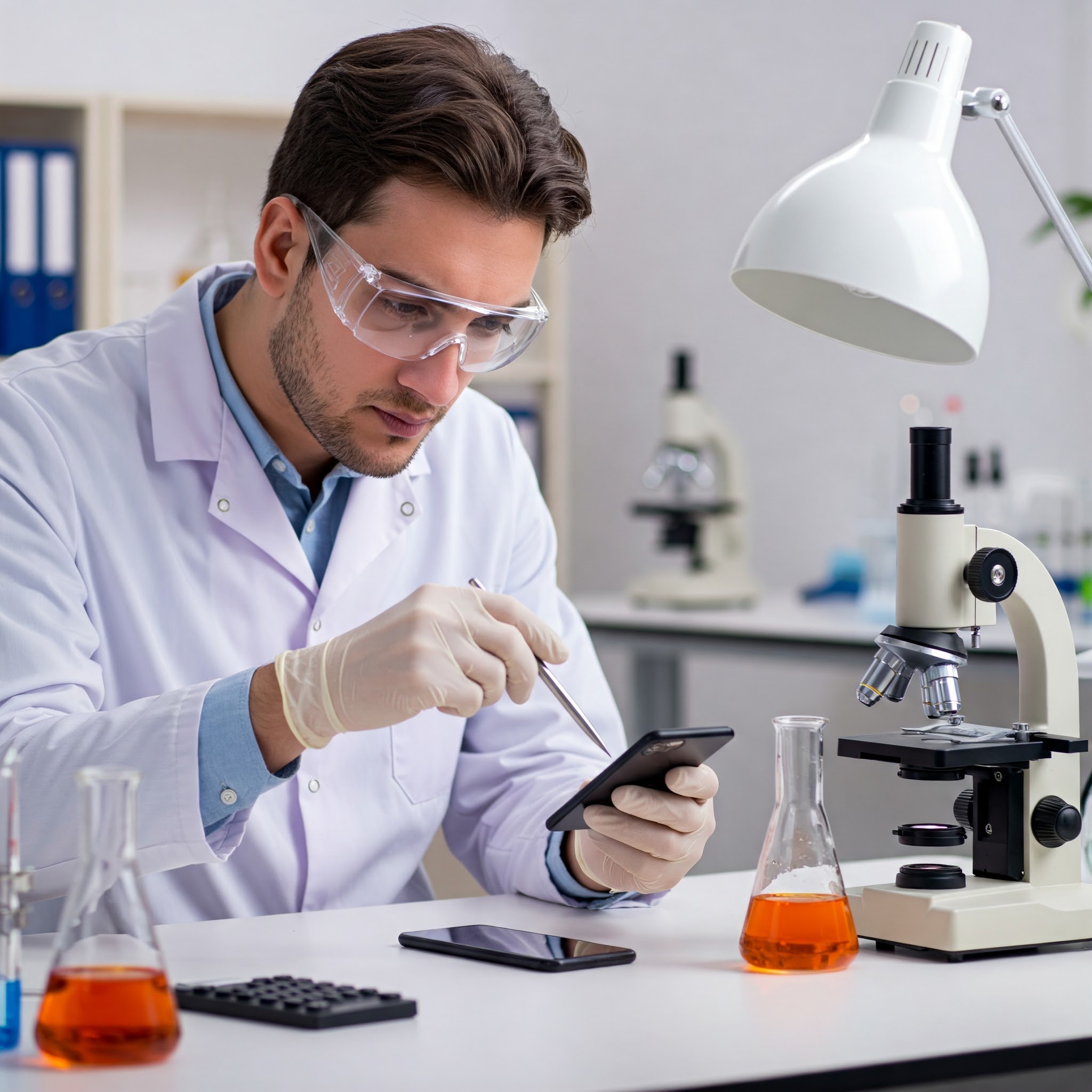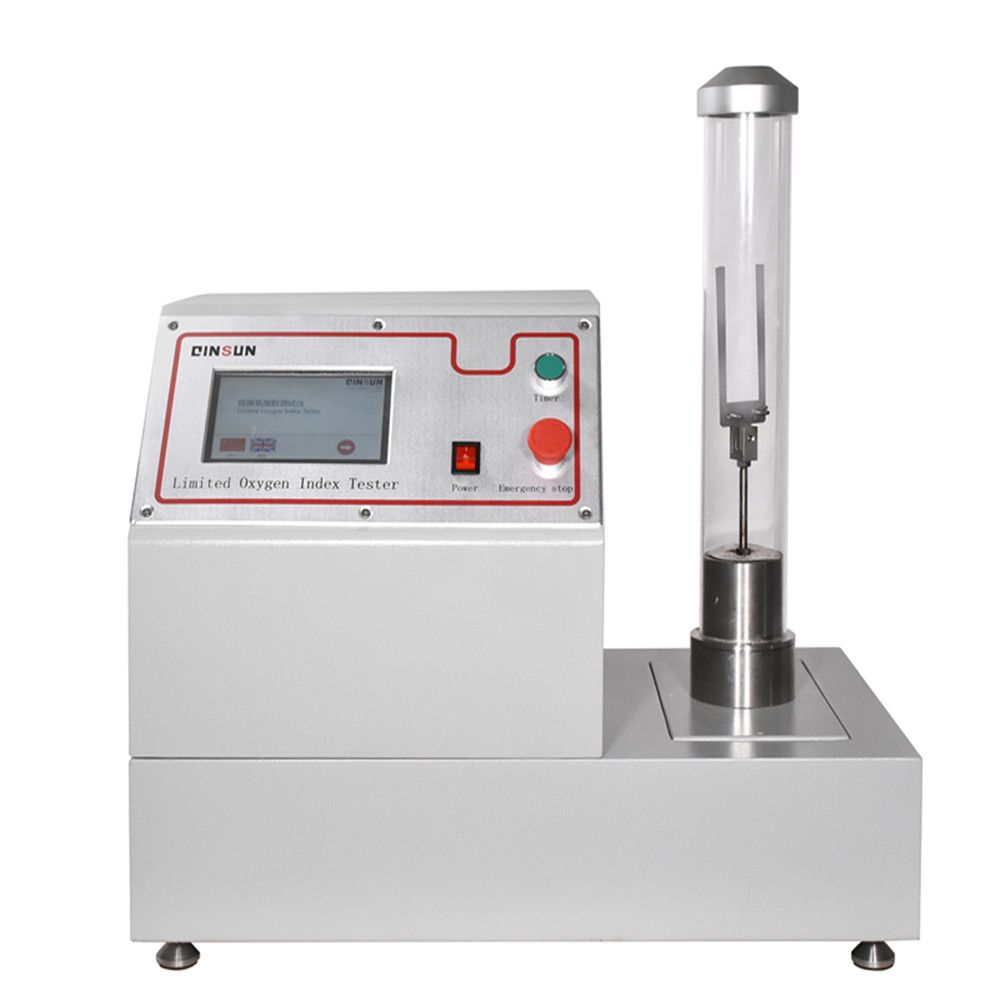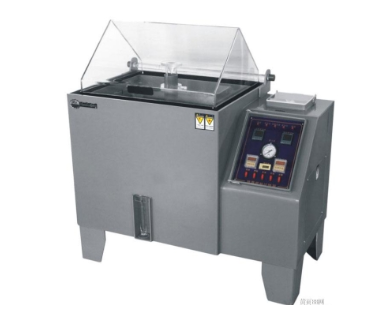What are the UV aging testing standards?
Blog 29 9 月, 2025
A UV aging test chamber is specialized testing equipment for UV-induced aging of materials. It focuses on the 280-400nm UV wavelength range of sunlight (the core factor that causes degradation and aging of materials such as plastics, coatings, and rubber). By simulating a cyclical environment of UV exposure + condensation/spraying, it rapidly verifies the aging resistance of materials in outdoor use. It is widely used in R&D and quality control in industries such as plastics, coatings, electronics, and textiles.
The test chamber’s core value lies in its ability to replicate UV aging failure phenomena (such as cracking, fading, and strength loss) in just weeks, eliminating the need for years of outdoor exposure. This provides data support for material formulation optimization and product lifecycle assessment.
Core Principle: Simulating “UV + Environmental Synergy” Aging
The primary cause of outdoor material aging is the synergistic effects of the chemical effects of UV light and the physical effects of temperature and humidity. The UV Weathering Test Chamber achieves this simulation through two core modules:
1. UV Light Source Module:
Utilizes specialized UV lamps (such as mercury or filtered xenon lamps) combined with filters to precisely output UV light in specific wavelength bands:
– UV-B Band (280-315nm): Short-wave UV with high energy and rapid aging. A commonly used filter is UVB-313 (simulating strong UV exposure environments, such as those in tropical regions). This filter is suitable for rapidly screening materials for UV resistance.
– UV-A Band (315-400nm): Long-wave UV, closer to the UV component found in natural sunlight (accounting for approximately 95% of the total UV in sunlight). A commonly used filter is UVA-340 (simulating real-world outdoor UV conditions), resulting in test results more closely aligned with actual usage scenarios.
2. Environmental Synergy Module:
This module simulates outdoor conditions of “daytime sun exposure → nighttime condensation → rain washout” through a cycle of UV irradiation and condensation/spraying.
– UV irradiation phase: The lamps are on, and the chamber temperature is controlled at 40-60°C (adjustable to simulate high summer temperatures). UV light directly illuminates the sample surface, inducing molecular chain breakage in the material (e.g., antioxidant degradation in plastics and pigment decomposition in coatings).
– Condensation phase: The lamps are off, and steam is generated by the heated water tank within the chamber, causing condensation to form on the sample surface. The temperature drops to 30-50°C, simulating a high-humidity nighttime environment. This accelerates moisture penetration into the material and exacerbates aging (e.g., rubber swelling and coating blistering).
– Spraying phase (supported by some devices): Deionized water is sprayed onto the sample surface through a high-pressure nozzle, simulating rain washout. This test tests the synergistic effects of water washout and aging (e.g., weatherability of outdoor coatings and color fastness of textiles).
Test Instrument: UV Lamp Aging Tester
This test chamber combines efficiency, precision, and convenience in testing material aging resistance. Its core advantages lie in its exceptional cost-effectiveness, low operating and maintenance costs, and intuitive operation, making it easily integrated into any laboratory environment.
The device features advanced automation capabilities, enabling unattended test cycles through a programmable controller. It precisely controls and automatically switches between light, condensation, and darkness phases, significantly improving testing efficiency.
It is committed to providing highly consistent and repeatable test results. Its stable UV output and strict temperature uniformity (±3°C) ensure high repeatability and reliability across test batches.
The device’s diverse and flexible simulation environments effectively replicate a variety of harsh natural climate conditions, including UV radiation, humidity, condensation, and thermal cycling, accelerating the material aging process. Users can also choose UV-A or UV-B lamps with different wavelengths to meet material requirements, enabling highly customized testing solutions.
Combining intelligent cycle control, real-time monitoring, compact design, and broad industry applicability, this device provides a comprehensive and efficient solution for durability assessment of geosynthetics, automotive coatings, plastics, textiles, and rubber products.
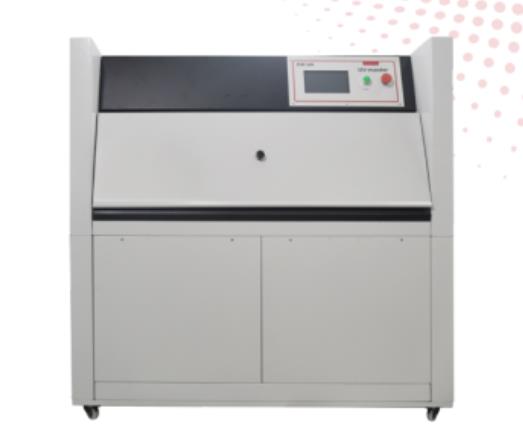
UV Lamp Aging Test Tester
Detailed Method (Practical Steps)
UV weathering testing must follow a standardized process to ensure repeatable and comparable data. The core steps are as follows:
1. Sample Preparation: Standardize Initial Condition
– Sample Cutting: Cut samples according to the test standard (e.g., plastic sample dimensions: 75mm x 150mm, paint sample dimensions: 100mm x 150mm). Each group should have at least three replicate samples to prevent individual sample errors from affecting the results.
– Sample Preconditioning: Before testing, place samples in a standard environment at 23°C ± 2°C and 50% ± 5% relative humidity for 24 hours to eliminate initial stress or moisture absorption caused by storage conditions (e.g., high temperature, high humidity) and ensure a consistent starting point for testing.
– Initial Performance Testing: Record key initial sample indicators, such as tensile strength/impact strength for plastics, color difference (ΔE initial)/adhesion for coatings, and breaking strength/color fastness for textiles. These will serve as benchmarks for subsequent weathering comparisons.
2. Parameter Setting: Matching Test Requirements and Standards
Five core parameters should be specifically set based on the material type, application scenario, and reference standards:
– UV Band: A UVA-340 filter (peak at 340nm) is commonly used for plastics and rubber materials. Its output wavelength is close to the natural outdoor UV environment, providing more realistic test results. For rapid screening of a material’s UV resistance (such as comparing formulations in early R&D), a UVB-313 filter (peak at 313nm) can be used to accelerate aging due to its short-wavelength, high-energy properties. For coatings, UVA-340 is often preferred to avoid the strong energy of UVB-313. which may cause aging to deviate from actual outdoor conditions.
– Irradiation intensity: This must be set strictly according to the reference standard. For example, ASTM G154 specifies that the UVA-340 wavelength band must be controlled at 0.71W/m² @ 340nm, and the UVB-313 wavelength band must be controlled at 0.71W/m² @ 313nm. Avoid excessive intensities. Exceeding the standard by more than 10% may cause excessive sample degradation (e.g., premature cracking of plastics), making the test results inaccurately reflect the true weathering performance.
– Temperature control: This is set in two stages: the UV irradiation stage is typically set between 40-60°C, with 50°C often used for plastic samples (to balance aging speed with actual conditions) and 60°C for paint samples (to simulate the high temperature environment of outdoor paint surfaces in summer). The condensation stage is set to 30-50°C, with a typical setting of 40°C to ensure stable condensation on the sample surface, simulating high humidity at night.
– Cycle: The most common mode is “8 hours of UV exposure + 4 hours of condensation,” corresponding to a 12-hour outdoor day/night cycle (exposure during the day + condensation at night). To simulate high-humidity regions (such as the rainy season in southern China), the cycle can be adjusted to “4 hours of UV exposure + 4 hours of condensation” to increase the proportion of high humidity. Some standards have fixed cycle requirements, such as ISO 4892-3. which explicitly stipulates that specific materials must use a “6 hours of UV exposure + 2 hours of condensation” cycle, which must be strictly adhered to.
– Test Duration: A fixed duration can be set according to actual needs (e.g., 500 hours, 1000 hours, 2000 hours). Alternatively, the “failure determination method” can be used—testing stops when the sample shows obvious aging failure (e.g., paint color difference ΔE ≥ 3. plastic tensile strength loss ≥ 30%, textile breaking strength retention ≤ 70%). This determines the material’s critical UV resistance lifespan.
3. Sample Placement and Test Operation
– Placement Requirements: The distance between the sample and the lamp must meet the standard (usually 50-75mm) to avoid local overheating caused by close proximity. A gap of ≥10mm must be maintained between samples to ensure even dripping of condensate and prevent obstruction.
– Operation Monitoring: During the test, regularly observe the sample status (e.g., every 200 hours) to record any cracking, discoloration, or powdering. Some equipment can be linked to testing instruments (such as a colorimeter or dynamometer) to monitor performance changes in real time.
– Abnormal Handling: If the lamp irradiance decreases (e.g., after more than 1000 hours of use), the lamp must be replaced promptly. If the condensate is insufficient, check the water level in the water tank and the heating device to prevent uncontrolled environmental parameters from affecting the test results.
4. Test Result Evaluation
After testing, key performance indicators are tested and evaluated based on product standards or customer requirements:
– Appearance Evaluation: Visually or microscopically evaluate samples for cracking, chalking, discoloration, or blistering (e.g., paint samples must meet the chalking grade ≥ 4. refer to GB/T 1766);
– Mechanical Performance Evaluation: Test the tensile strength retention of plastics (requires ≥ 70%), the hardness change of rubber (requires ≤ ±10 Shore A), and the breaking strength retention of textiles (requires ≥ 80%).
– Functional Performance Evaluation: Electronic outdoor product housings must be tested for impact resistance (no cracking) and sealing (no water seepage); coatings must be tested for adhesion (cross-hatch method ≥ Grade 1. refer to GB/T 9286).
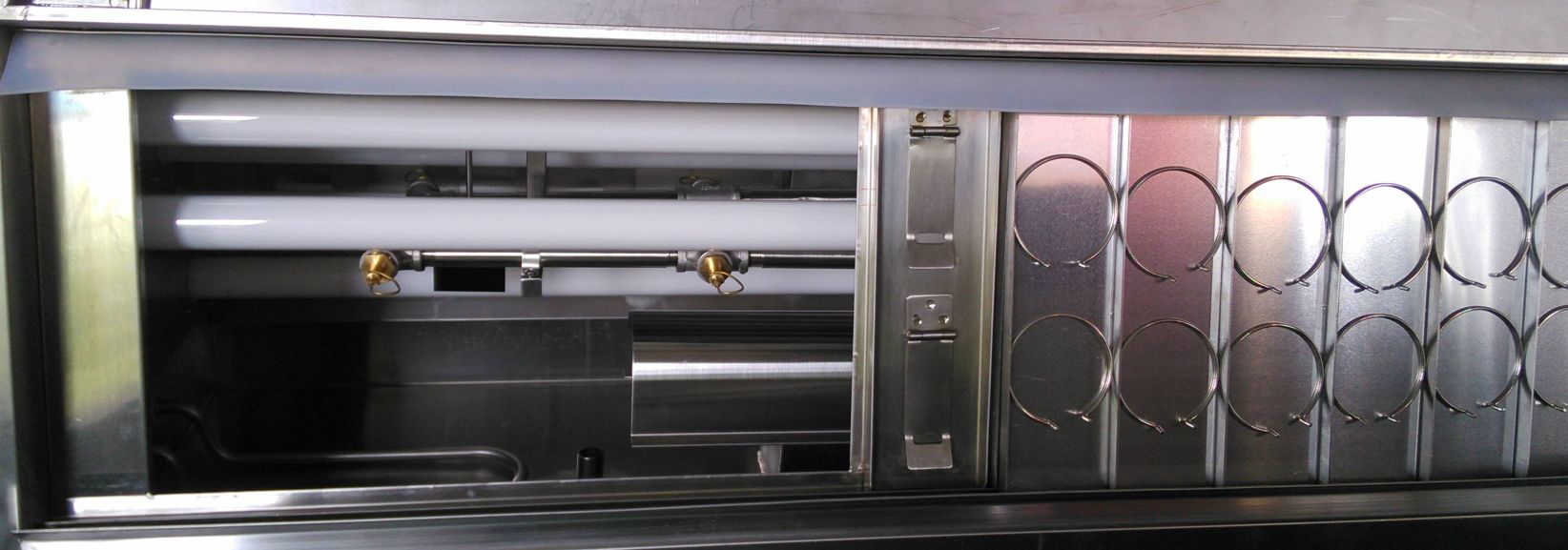
UV Lamp Aging Testing Tester
Key Standards (Classification and Analysis)
Different industries have different testing requirements corresponding to different standards. Core standards can be categorized as “international standards,” “national standards,” and “industry standards.” Each standard specifies test conditions, parameter ranges, and result evaluation methods:
1. International Standards (Most Widely Used)
– ASTM G154 (American Society for Testing and Materials): “Standard Practice for Ultraviolet Exposure of Nonmetallic Materials.” This general standard covers materials such as plastics, rubber, and coatings. It specifies the use scenarios for filters such as UVA-340 and UVB-313. as well as control requirements for temperature (40-60°C for UV exposure, 30-50°C for condensation) and irradiance (0.35-1.4 W/m²). It is the preferred reference standard for most companies.
– ISO 4892-3 (International Organization for Standardization): “Plastics—Exposure to Laboratory Light Sources.” Part 3: Ultraviolet Fluorescent Lamps, specifically targeting plastic materials, breaks down into Method A (UVB-313), Method B (UVA-340), and Method C (UVA-351). It specifies the irradiance intensity ranges for each method (e.g., Method B: 0.71 W/m² @ 340nm) and cycle times (e.g., 8 hours of UV + 4 hours of condensation).
IEC 60068-2-5 (International Electrotechnical Commission): Environmental Testing — Part 2-5: Test Methods — Test Sa: Simulated Terrestrial Solar Radiation. This standard targets electrical and electronic products, focusing on testing the UV aging resistance of components such as housings and cables. It specifies requirements for temperature (55°C ± 3°C) and irradiance intensity (1.12 W/m² @ 300-400nm).
2. National Standards (Required for Domestic Enterprises)
– GB/T 16422.3-2022 (China National Standard): “Plastics – Test Methods for Exposure to Laboratory Light Sources – Part 3: Ultraviolet Fluorescent Lamps.” This standard, equivalent to ISO 4892-3. is applicable to the domestic plastics industry and specifies the technical parameters for three filters: UVB-313. UVA-340. and UVA-351. It also specifies the parameters for the two cycle modes: “UV irradiation + condensation” and “UV irradiation + spray” (e.g., UV stage temperature 50°C ± 3°C, condensation stage 40°C ± 3°C).
– GB/T 1865-2009 (Paints and Varnishes – Artificial Weathering and Artificial Radiation Exposure): For coatings, this standard, referencing ASTM G154. specifies UV weathering test conditions (e.g., UVA-340 irradiance 0.71 W/m² @ 340nm, cycle 8 hours UV + 4 hours condensation), and defines the criteria for determining color difference, chalking, and adhesion.
– GB/T 3512-2014 (Vulcanized or Thermoplastic Rubber – Hot Air Accelerated Aging and Heat Resistance Tests): Contains an appendix on UV aging testing for rubber, specifying the temperature under a UVB-313 light source (50°C ± 2°C), the test duration (typically 168 hours or 336 hours), and the changes in hardness and tensile strength after aging.
3. Industry-Specific Standards
– Automotive Industry: ISO 11341-2: “Paints and varnishes — Artificial weathering exposure — Part 2: Ultraviolet fluorescent lamp exposure.” For automotive paint surfaces, this requires the use of a UVA-340 light source with an irradiance of 0.71 W/m² @ 340nm and a cycle of “10 h UV (60°C) + 14 h condensation (40°C)” to simulate the day and night environment of a car parked outdoors.
– Textile Industry: AATCC TM 186: “Test Method for Resistance of Textiles to Ultraviolet Light.” For outdoor textiles (such as tents and sunshades), this requires the use of a UVA-340 light source. After testing, color fastness (grey scale ≥ 4) and breaking strength retention (≥ 70%) are evaluated.
Practical Notes (Pitfall Avoidance Guide)
1. Regular Filter Replacement: After 1500 hours of use, the UVA-340 filter’s UV output will deviate by more than 10%. It must be replaced promptly, otherwise test results will be skewed (inadequate aging).
2. Sample Pretreatment Specifications: Samples must be trimmed away from the edges (≥10mm from the edge) to prevent premature cracking during testing caused by shear stress. Pretreatment requires 24 hours of exposure in a standard environment (23°C, 50% RH) to eliminate the effects of the storage environment.
3. Parameter Calibration: Quarterly, calibrate the lamp intensity with a radiometer and the chamber environment with a thermohygrometer to ensure that parameters meet standards. (If the temperature deviation exceeds ±2°C, adjust the heating module.)
4. Comparison and Consistency of Results: When testing in different laboratories, standard standards (e.g., ASTM G154 + UVA-340) and cycle times must be standardized to avoid data incomparability due to differences in standards.
The core of a UV weathering test chamber is to “use a controlled UV environment to quickly expose material aging weaknesses.” Testing methods and standards serve as the benchmark for ensuring reliable data.
When using a UV weathering test chamber, companies must select appropriate standards and parameters based on their product’s application scenarios (e.g., tropical vs. temperate climates, short-term vs. long-term outdoor exposure). Only then can the test results truly guide R&D and production, avoiding outdoor failures caused by insufficient UV resistance.
